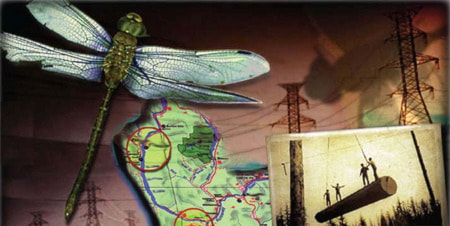The 2,000-kilometre Columbia River was vital to many regions and peoples in the Pacific Northwest long before European contact. To preserve and further enrich its history, organizers of the Columbia River Watershed Storytelling Tour are scheduling events in every community the river runs through, and it’s all starting in Osoyoos.
“The storytellers are people who are connected in some way to the place where the stories are being told, who can share and celebrate their perspectives on the social and environmental aspects of living in their particular watershed,” said organizer Teresa Marshall who will be reading her poetry at the event.
The public is invited to learn about many of the river’s strengths as well as the challenges facing it.
A major example will be the installation of large dams, which made available vast amounts of energy through hydroelectricity, but at the cost of severely hampering the annual salmon run.
“When the Grand Coulee Dam (halfway between Spokane and Seattle) was built in the 1930s, it blocked the return of salmon into Canada,” Marshall said. “Prior to the Grand Coulee Dam being built in Washington State, the upper watershed of the Columbia River produced some of the greatest salmon runs in the world.”
Efforts are being made to restore the salmon run by lobbying for the installation of fish ladders, and temporary measures have been made, such as shuttling salmon beyond impassable dams.
“It’s been decades since there has been a healthy run of salmon reaching very far into Canada, so the work that the Okanagan Nation Alliance has been doing is really important around having salmon return to the Okanagan,” she said.
The project will work with organizations on both both sides of the Canada-U.S. border to set up more events in 2016 and 2017, which brings about logistical challenges since the river isn’t bound by political borders.
“The purpose of the storytelling tour is to work with local communities to co-host events where people can come together as neighbours to share stories about what we appreciate about the watershed and the bioregion we live in and to find common stories that draw us together or that allow us to understand different perspectives, particularly of settler and native communities.”
During the presentation, members of local First Nations will share the connection of their family history with the river, and explain how their stories are embodied in the watershed.
“For me the landscape functions in a mnemonic way, it holds memories, triggers stories and inspires,” Marshall said.
Marshall, who grew up in Syilx territory near Osoyoos, is excited to reconnect with the community after recently returning from five years abroad as a humanitarian worker.
In addition to poetry readings from Marshall and discussion about returning salmon to the Okanagan, the evening will include songs and storytelling by Csetkwe Fortier, original music by Algoma, the Syilx water declaration presented by Tessa Terbasket, short films about IndigenEYEZ youth camp, and the river’s particular importance in Osoyoos’s pocket desert bioregion.
The event takes place Nov. 26 from 7 to 9 p.m. at the Watermark beach Resort Hotel in Osoyoos. Admission is $5 or pay-what-you-can.
